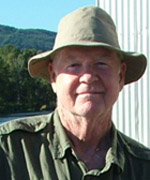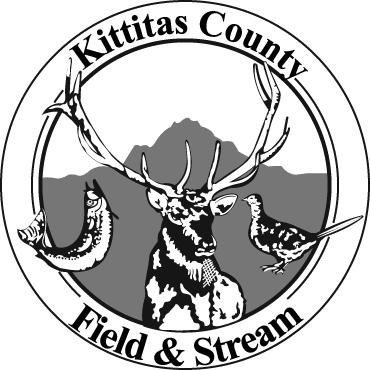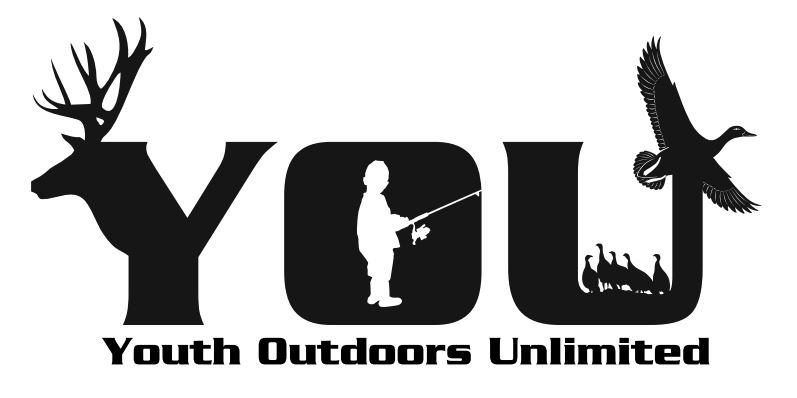Archive for October, 2016
Hunting Exotic Wildlife in Our Homes
When I was a kid in East Wenatchee and Boise, shooting rats at the dump was great fun – and appreciated. Landfills are now more carefully managed. Rats have found new homes. Times have changed
If you are reading this, you probably have been reading other things in this rag, too – maybe the periodic stories about the rats of Paradise. Those stories have focused on what to do outside; clean up trash, pick up fallen vegetables and fruits in the yard and garden, and plug up those holes that might be letting rats into your house. No shortage of pats on the back about fewer rat complaints in town, either, but little to nothing has been said about what to do if they are already in your house.
Contact the city and they will refer you to the rules about cleaning up outside areas and David Kaufman, the guy who, thankfully, has been spearheading that work. Contact the County Health Department and they will tell you of the potential diseases rats carry and the dangers of wire-chewing, and then recommend you go online or contact one of the local pest control companies.
You may already know this, but rats can get expensive and scary in a hurry. They can move in pretty quickly after some neighborhood cleanup or some change in the household. You may, as we have, discover that you have one or more rats when you are suddenly faced with a $300+ dollar bill for replacing the chewed-up wire harness of your dish washer, and discover a set of wires in the attic chewed within 1/32 of an inch of a possible house fire. Now start hunting the rats.
As Chair of the Problem Wildlife Subcommittee of the Reecer Creek Rod, Gun, Working Dog & Outdoor Think Tank Benevolent Association, I am required to provide the specifics below.
We are talking about the black rat (aka roof or ship rat). An exotic, or alien, species, probably brought to the US on ships, its scientific name is Rattus rattus, It originated in tropical Asia, found its way to Europe (where it has long been associated with the plague), then to North America. It is a sleek black rodent with a gray, buff or white belly, measuring to ten inches from its pointy nose to tail tip. Its tail is as long as its body, and it will weigh up to slightly over half a pound. Roof rats will eat about anything you eat, from fruit to veggies to meat. Females may have three litters of five to eight young a year. Within a few weeks of being born hairless and blind, the little rats are out scrounging. The black rat occupies the eastern, southern and western portions of our country.
The problem with hunting rats is that they may be smarter than most of us humans. Put out poison bait (even the $15 guaranteed variety) and they scatter it. Put out sticky trays and traps and they will find a way around or over them. Go online and find that, while one person insists you can catch them all in a couple days, most of the pros and your fellow rat hunters speak in terms of months. In the meantime, you try to find rat-proof food containers, look for chewed wires – and hold your breath.
The more you learn, the more you wish you didn’t know.
Here’s a roundup of online info about “dealing with rats in your house.”
Virtually every bit of advice starts at the same place: find and close (steel mesh and steel wool are most often recommended) every possible entry hole bigger than a quarter inch around the exterior of your house. Only then do you go after the rats in the house or building.
Tools and techniques are all discussed in excruciating detail, with a surprising level of agreement among bloggers from across the country. Rat poison is not recommended: if they do eat it, you end up with pretty large rotting and smelly animals in walls and hard to access places. Glue boards, or sticky traps, are almost uniformly thought to be inhumane – even for those @!#! rats – and they often get dragged into hard to access places. Repellant sprays or gimmicks, powders, sonic boxes, and flashing lights are virtually never effective for more than a day or two. The uniform solution is setting numerous large rat traps. The large rat traps are baited with fruit, peanut butter, bacon, or something else they seem to be enjoying and set in places the rats travel. It is recommended that you attach the traps somehow (screw them down or wire them to something) because they can be dragged away to not easily accessible places. After you have caught all the rats (a week to six months), clean and decontaminate.
Find out all you ever wanted to know about rats in North America in Rex Marsh’s essay at icwdm.org/handbook/rodents/RoofRats.asp, the site for the Internet Center for Wildlife Damage Management. Do a search for “how to get rid of rats” and you will learn more than you really wanted to know. The guys at Prosite Pest Control (509-925-5900) are worth a chat anytime.
Happy rat hunting.
Comments Off on Hunting Exotic Wildlife in Our Homes
Upper Columbia Steelhead Troubles
If you are a semi-regular with this weekly peek into the outdoors, you are certainly aware that Homey Kirk Johnson and I, along with various and sundry close family, have a thing for the steelhead of fall – especially on the Upper Columbia.
Thus it has been that each fall for the past several years Homey, boyfriend-in-law Brian Smith (POSSLQ with a daughter) and I have found ourselves driving into Pateros at somewhere around 6:30 a.m. We would meet up with Shane Magnuson for our annual steelhead adventure on the Columbia and one or two steelie-looking tributaries. We have been looking forward to late November with great anticipation and expectant conversation.
We know that, in this fishery, we will be allowed to keep hatchery steelhead – those with a missing adipose fin – and will be releasing all wild fish. Most years, something around two-thirds of the fish that come to play with us are hatchery-origin steelhead. And the limit of those keepers has ranged from one to three fish over the years.
We might talk about how Shane will get us into position at the head of a good stretch of ripe water, and ride through as we skillfully wield our spinning gear – dropping our drifting lure or bait into just the right spot in the transition zone at the edge of the river’s thalweg (the fastest water at a given point on the stream). All this to elicit a strike from a strong, red-streaked, bright-sided fish. This we will do hour after hour; casting, drifting and casting again, with just enough action to keep our blood pressure at a healthy level.
Now and again, Shane will decide we need to hit a more promising stream. During that short transition we will compare notes on earlier years and other streams. We will talk about the brilliant chrome steelhead Homey Bill Boyum and Kirk and I may have brought home from the Lower Columbia – or some other regional steelie action. And, Brian will remind us that he usually has the hot hand with steelhead. We will dutifully suggest that this year will be our year, and he must simply accept that he is about to be skunked.
By mid-morning, we may be wending our way up the almost-too-shallow Okanogan. There will be fish everywhere, and many strikes.
What a great trip this is going to be!
But, Alas. It ain’t going to be this year. And – we’ll see – it may be awhile.
Jeff Korth, Washington Fish and Wildlife’s Northcentral Regional Fish Pro has just announced that there will be no fishing season this fall and winter for steelhead on the Upper Columbia. Blame a sudden deep and sharp drop in the numbers of fish heading up the river.
At this point, the run is only one-third of the 10-year average of steelhead counts at Priest Rapids Dam. Run timing is right on the ten-year average, so it is very unlikely that the fish are just running late. The forecast at this point calls for about 6,300 steelhead at Priest Rapids Dam, well under the minimum of 9,550 fish required by NOAA-Fisheries before a fishing season is allowed on the mainstem or tributaries of the Upper Columbia River. For a successful spawning season, all fish possible – both wild fish and hatchery produced (from wild stock) – must reach the spawning areas.
Korth notes that the last time Upper Columbia steelhead runs were this low (in the 1990s), the result was a 1997 federal “endangered species” listing. The steelhead run to the Upper Columbia was later re-classified as “threatened,” as returns improved. Only time will tell what this weak run will bring.
Interestingly, Jeff said the weakest component in the current steelhead run is “one-salt” fish (those that stay in the ocean for just one year). One-salt fish are likely to be a bit over a third of the run passing over Priest Rapids Dam – slightly over half of the average run. The fish returning will, therefore, be a bit larger on average, but the impact of that on spawning success remains to be seen.
Steelhead fishing on the lower river is closed effective October 22, from the Pacific Ocean to Highway 395 south of the Tri-Cities. The one remaining steelhead fishery in the Columbia River above Highway 395 will be at Ringold, where anglers may keep two hatchery steelhead (identified by both a clipped adipose and left ventral fin). Jeff expects the Ringold run to amount to just a fraction of its usual size.
Bummer. Let us hope this is a one-and-done Upper Columbia year, not a harbinger of things to come – again.
Comments Off on Upper Columbia Steelhead Troubles
Finally – Deer Season
It was one of those Washington state personalized license plates you wish you had imagined first. I’ve been thinking about it because this is the weekend for which it was created. The weekend before us is the biggest opening weekend among the various openers for wildlife big and small, feathered and furred. The plate read “BUXNDUX.” Perfect.
They will not all be afield, but this weekend will find somewhere around 120,000 Washington deer hunters with licenses in their pockets, and more than 40,000 duck hunters who purchased migratory bird permits. Over the course of the seasons opening tomorrow, among them, they will harvest as many as 40,000 deer and 550,000 waterfowl.
(As an aside, I have long been intrigued by wildlife biology and biologists. I once read the work of a prominent waterfowl researcher whose name was Duckworth Fowler. …but I digress.)
Given that most of our closest hunting is for deer, allow me to focus on those seasons. We have three generally recognized species: mule deer, white-tailed deer and black-tailed deer. Deer being deer, one readily stumbles across various hybrids and subspecies.
Under by-laws and several resolutions of the Reecer Creek Rod, Gun, Working Dog & Outdoor Think Tank Benevolent Association (RCRGWD&OTTBA), I am now duty-bound to share the below information.
White-tailed deer (named for the white underside of their large tails) are largely in our east and northeast counties, and down along the Columbia River. Columbian black-tailed deer (for the black upper side of their tails) are generally along the coast, but wandering over the Cascade crest in a few spots. Rocky Mountain mule deer, or muleys (for their huge ears), are found in much of the habitat east of the Cascades. They are the primary deer we see – and hunt – here in Paradise. Of course, it is never that simple.
Blacktails were long considered to be descendants of ancient love affairs between muleys and whitetails. Over a decade ago, however, biologists apparently identified mitochondrial DNA (tracing mothers) suggesting that mule deer may have actually sprung from a blacktail/whitetail cross. (An interesting introduction to this, and a reference to Valerius Geist’s book on muley life history, will be found at www.blacktailcountry.com/html/blkpage.htm.) Our Department of Fish and Wildlife, however, continues to identify muleys and whitetails as species, and blacktails as subspecies, within a thorough discussion of deer foods and habitats at wdfw.wa.gov/living/deer.html. Other subspecies and crosses are discussed there, too. It is generally agreed that mule deer are the largest and black-tailed deer the smallest of the three.
Given that our local deer are mostly muleys, the RCRGWD&OTTBA Science Education Committee requires the following. Mule deer’s scientific name is Odocoileus hemionus. It is a medium‑sized mammal, from 36 to 40+ inches at the shoulder, weighing 100 to 250 pounds (bucks are largest, of course). Its summer color is reddish, becoming brown‑gray with its longer winter coat. Look for the large ears, a scrawny black‑tipped tail and white rump, and a trademark “bounce” when escaping. Favored foods include shrubs, forbs, alfalfa and fruits.
Locally, we see a couple interesting crosses. First are probably the piebald, or “pinto,” deer, with large white patches (some sort of genetic mutation), occasionally seen down the Yakima Canyon, and rarely up the Taneum. Then there are the “striped‑tails,” on the west side of the valley, up into the Taneum and Manastash areas. These deer look like muleys except for a black stripe running the length of their narrow tails, resulting from a blacktail‑muley relationship.
Over the past 100 years, North American mule deer populations have suffered wide swings in population, with harsh winters, habitat loss and shifting climates. A good summary of issues affecting muleys is found at www.muledeer.org/hunting/mule-deer-facts. You may also find interesting WDFW’s Mule Deer Management Plan at wdfw.wa.gov/conservation/mule_deer/.
In Washington, we generally have well over a hundred thousand muleys, with larger numbers of whitetails and a smaller population of blacktails. Of the more or less 40,000 deer in this year’s harvest – feeding families well for the coming year – one-third will be mule deer, more than a third will be white-tailed deer and less than one third will be black-tailed deer.
In general, over the coming weeks deer will be foraging from dusk to dawn, but may be seen most any time of day as they put on critical fat for winter. You may see mule deer almost anywhere in Paradise, but check out the Yakima Canyon, or drive the back roads up the Taneum or Teanaway, or around Cle Elum and Upper Kittitas County.
Whether you hunt or not, there’s something about finding and watching deer that can change the light in a fall sky.
Comments Off on Finally – Deer Season
Here’s to More Outdoor Schools
You probably know how much I appreciate the Roslyn Outdoor School (now Washington Outdoor School), and the work KEEN (Kittitas Environmental Education Network) has done to bring real outdoor education to kids in the Lower Valley at Helen McCabe Park.
You certainly know how much this “kids outdoors” stuff interests me, so you can imagine my excitement when NWPR and Homey turned me on to “Into the Woods: Outdoor and Nature-based Preschools in Seattle, the Eastside and Tacoma.” This very interesting article is in the October issue of Parent Map (www.parentmap.com) – a Mercer Island-based monthly news magazine and online resource.
When I was a kid, my folks would just step to the door and hold it open whenever I got what the Old Man called “that look.” I did everything I could to get my own kids outside, and for some years I’ve been writing about Richard Louv’s world-wide Children and Nature Movement devoted to curing what he calls “Nature-Deficit Disorder.” A number of us have been working to get a Washington Children’s Outdoor Bill of Rights established in the state (Senator Judy Warnick is sponsoring the bill this year). This business of getting kids seriously and joyfully outdoors is important.
You don’t have to look far or hard to find research about the highly positive health, life and general well-being impacts of outdoor time and activities for kids and adults. The Danes and Swedes started outdoor kindergartens in the 1950, with Germany not far behind. There are now hundreds of “forest kindergartens” across Europe – all devoted to building the future health of their citizens and their countries.
The education and health side of this is particularly interesting to me – especially when it comes to vision. In the early ‘70s, an ophthalmologist buddy and I were discussing what seemed like an epidemic of nearsightedness in kids across Denver. “Well,” he asked, “what do you expect? Suddenly parents think their kids will be smarter and better if they can read by the time they are four years old, so everywhere you look kids have books on their noses – and it is pushed more in kindergarten! If you want kids to have healthy and strong eyes, get them out in natural light looking at distant things – then really limit the time they are focusing up close until they are eight or nine… Sadly, in this society and this education system, I expect to see more and more young kids’ eyes. If you want it better, get your kids outside…”
It is really starting. In Paradise, we now have the Washington Outdoor School Fridays at Helen McCabe, and three mornings a week in Roslyn, with a few other outdoor classroom activities on late start days and other opportune moments. With enough support and the right outdoor-savvy teacher(s), our local outdoor school could become a daily school and even add a kindergarten.
Kudos to Sibyl Maer-Fillo for making it happen here. After 20 years of teaching and working at all levels of education, she is living her dream of getting young students immersed in the natural world – outside. Her belief that a child’s interaction with nature helps develop a sense of place, awakens curiosity, and creates healthy minds and bodies reflects the important work now spreading across the planet. This work of connecting kids with Earth helps build stronger communities and a life-long commitment to the proper functioning of our natural world. Take a look at some happy youngsters and find out more – or get involved – at www.roslynoutdoorschool.org.
And what about those Seattle-area preschools? There are now more than two dozen organized outdoor preschools in the Greater Seattle area, along with a number of private and city-sponsored outdoor play groups. Run through the names of them, and you may start wishing you were a rugrat again. Consider the possibilities with names like Wind Gatherer Nature Preschool, Cedarsong Forest Kindergarten, Tiny Treks Preschool, Playful Hearts Little Sparrows Forest School, Nurture in Nature Preschool, Fox in the Forest, Froggy Holler Outdoor School, or (my personal favorite) Nature Nuts Outdoor Preschool. Many of these are private schools, but some of the outdoor preschools, apparently, are attached to public schools. These schools make a great step into the outdoor future so many of us are working to create. Start with the online article in Parent Map magazine at www.parentmap.com/article/into-the-woods-outdoor-preschools-in-greater-seattle, then see what’s happening across the rest of the world.
So, if outdoor schools are so good for youngsters and our future – and save a significant amount of money over traditional classrooms – what will it take for our local school districts to get on board?
Hmmmm…
Comments Off on Here’s to More Outdoor Schools







